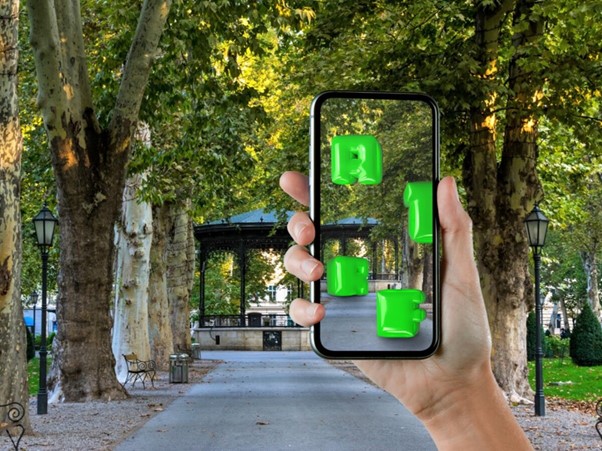In 2020, a world in the throes of the pandemic questioned when everything would go “back to normal”. In 2021 and 2022, society largely accepted that instead, we were facing a “new normal”. And, as the changes of the past three years continue to evolve, we at Foresight Factory have projected that we are in fact living in a “never normal” world that is irrevocably changed.
We explored this concept in our second webinar of the year , Navigating the Never Normal, where we shared an exclusive first look at our brand-new wave of 2023 data and explored the many areas of uncertainty that lie ahead – including how brands can respond to these ever-changing situations and help provide guidance and support to consumers. Read an excerpt below, where we outline 3 features of a Never Normal world.
1. Cash-strapped consumers are elevating pantry staples

Food is a necessity, but dining out is a luxury for many, especially during the current cost of living crisis. As food prices continue to rise, even at-home eating habits are changing for cash-strapped consumers: 35% globally have already made cutbacks in their food spending, and 25% plan to do so in the 12 months from January 2023.
Rather than disparaging their discount spending, consumers are finding ways to make even the most basic pantry staples feel more fun. One example is ” – glammed up ice that comes in a wide range of shapes and flavours. #Icetok has more than 1 billion views on TikTok, with uniquely shaped ice moulds like butterflies and roses selling out online. We’ve also seen tinned fish go viral, a food often thought of as better suited to apocalypse prepping than date night planning. Nonetheless, on TikTok, #tinnedfishdatenight has reeled in 28.6 million views, and creators – from everyday eaters to professional chefs – are sharing their tips and tricks for making the humble cupboard essential feel more sexy and even celebratory. Brands including Wildfish Cannery, Siesta Co. and Fishwife have the elevated packaging (and price point) to match the mood, but traditional tins are also seeing an uptick in sales and recipe ideas.
For brands who want to resonate in today’s context of cost-cutting, consider messaging that puts a spin on affordable products that can help consumers feel like they’re enjoying an indulgence. Emphasising money-saving measures is important to many, but shifting the narrative can appeal to consumers’ desire for an exceptional experience at a time when purse strings are too tight to plan a more traditional one.
2. Cheap and cheerful fun is in high demand

Dressing up tinned fish and ice is not the only way consumers are turning bargain buys on their head. “Cheap treats” tend to reign supreme during recessionary times, when consumers cut back on leisure and discretionary spending without forgoing them altogether – whether that’s food, fashion or leisure.
Having fun at home is one way that consumers are saving money. Globally, 17% have already cut back on their leisure (e.g. holidays, cinema, bars, pubs, restaurants) by entertaining at home instead of going out, and an additional 14% plan to do so in the next 12 months. Brands who can offer free or inexpensive options for fun experiences in the home will reach this growing audience who plan to keep leisure spending limited.
For consumers engaging in out-of-home entertainment, free or inexpensive is still at the top of the list of priorities for many. Rather than gatekeeping a new art exhibit with entry costs, a gallery in Croatia offered an AR version that consumers could enjoy out in the streets. Facilitating the affordability of such entry costs, Tesco offers discounted access to leisure attractions for loyalty programme members.
For now, the primary focus for brands should be offering affordable and even free ways consumers can engage with your brand, knowing that this can be a gateway to future spend. Consider harnessing opportunities in virtual worlds to give consumers access to exciting yet inexpensive indulgences, or overlaying virtual aspects onto real-life experiences to add an element of dynamism and intrigue without breaking the bank.
3. AI is a force to reckon with at home and at work

What was long the subject of science fiction is now becoming more and more a part of our never normal everyday lives. Artificial intelligence is growing in scope and impacting consumers’ lives personally and professionally. It has the potential to be a tool that helps consumers to make better decisions, or something that brands could use to their advantage, potentially to the detriment of consumers. A similar point can be made about employees and employers: as AI grows more advanced, the challenge will be to ensure that it empowers employees rather than displacing them altogether.
New plug-ins are frequently being released to integrate with ChatGPT to assist with consumer tasks, in everything from travel planning (Expedia, Kayak) to shopping (Instacart, Klarna Shopping) to language and math learning (Speak, Wolfram). In the world of work, consider new services like Microsoft’s Copilot, an AI assistant that can create pivot tables, transcribe meetings, generate PowerPoint slides and more. Whether at home or the office, the purpose of many such AI applications is to make tasks more simple and efficient, thus giving consumers time back to focus on other areas. However, interacting with AI is a sought-after experience itself for some. Indeed, our 2022 data shows that more than 1 in 2 Gen Z and Millennials are interested in having an AI friend to talk to for advice or companionship.
In this truly uncharted arena, one imminent action for brands to take is to have considered conversations about how to implement AI, if at all, so that your own employees and customers are aligned on the role that it plays inside your brand. You can also promote AI literacy so that those interacting with your brand via AI feel empowered to harness such technology as a positive tool. And as AI continues to display behaviours that were once considered uniquely human – such as creativity and emotional intelligence – brands have a role to play in helping people redefine and celebrate who we are as a species. Messaging that emphasises our connection to nature and other animals, our ability to self-reflect, and our self-driven curiosity, for example, may resonate now more than ever.
Want more insights into the Never Normal world and how brands can help consumers react and adapt? Watch the full webinar now.